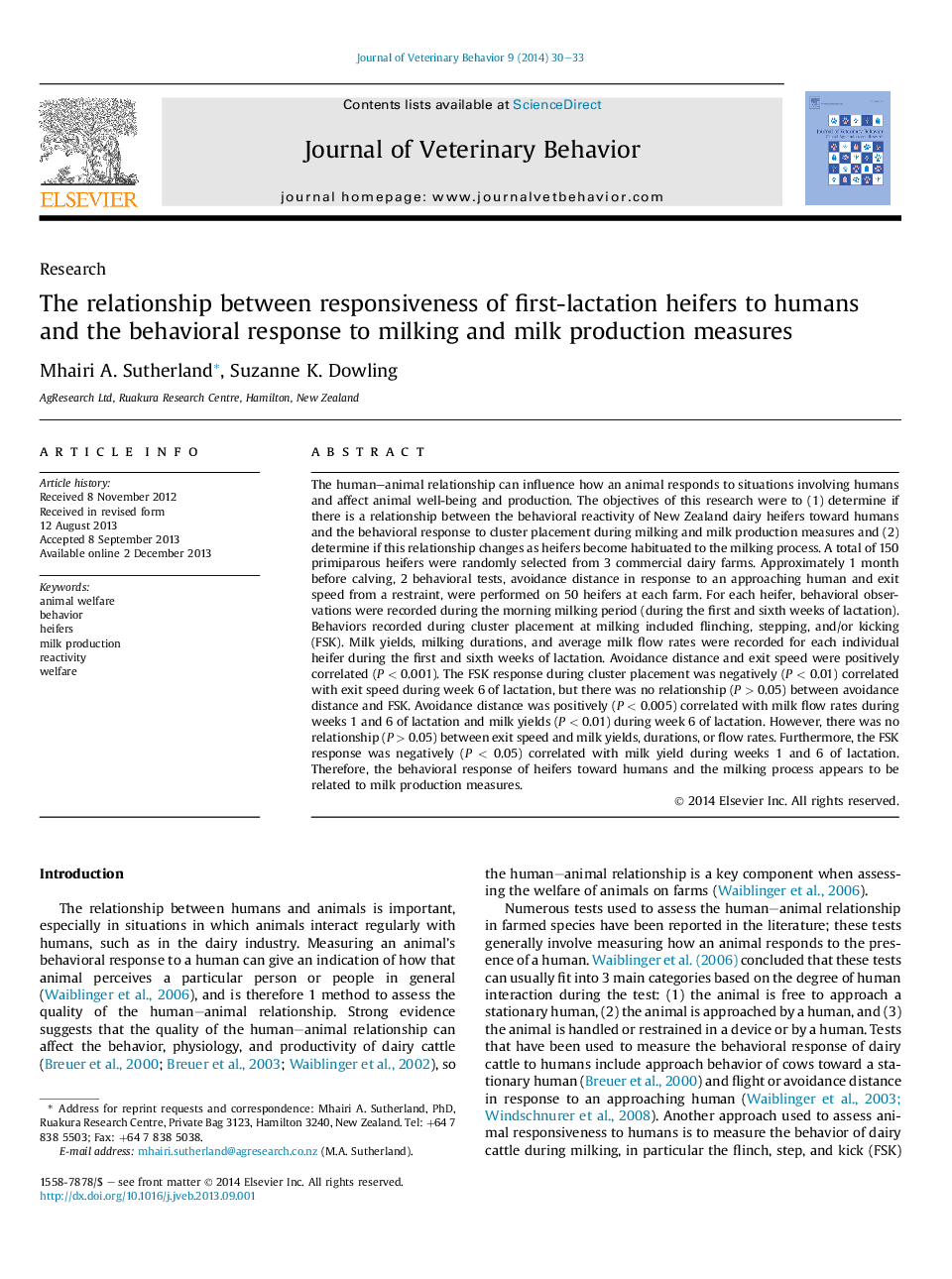| کد مقاله | کد نشریه | سال انتشار | مقاله انگلیسی | نسخه تمام متن |
|---|---|---|---|---|
| 2398809 | 1102018 | 2014 | 4 صفحه PDF | دانلود رایگان |
The human–animal relationship can influence how an animal responds to situations involving humans and affect animal well-being and production. The objectives of this research were to (1) determine if there is a relationship between the behavioral reactivity of New Zealand dairy heifers toward humans and the behavioral response to cluster placement during milking and milk production measures and (2) determine if this relationship changes as heifers become habituated to the milking process. A total of 150 primiparous heifers were randomly selected from 3 commercial dairy farms. Approximately 1 month before calving, 2 behavioral tests, avoidance distance in response to an approaching human and exit speed from a restraint, were performed on 50 heifers at each farm. For each heifer, behavioral observations were recorded during the morning milking period (during the first and sixth weeks of lactation). Behaviors recorded during cluster placement at milking included flinching, stepping, and/or kicking (FSK). Milk yields, milking durations, and average milk flow rates were recorded for each individual heifer during the first and sixth weeks of lactation. Avoidance distance and exit speed were positively correlated (P < 0.001). The FSK response during cluster placement was negatively (P < 0.01) correlated with exit speed during week 6 of lactation, but there was no relationship (P > 0.05) between avoidance distance and FSK. Avoidance distance was positively (P < 0.005) correlated with milk flow rates during weeks 1 and 6 of lactation and milk yields (P < 0.01) during week 6 of lactation. However, there was no relationship (P > 0.05) between exit speed and milk yields, durations, or flow rates. Furthermore, the FSK response was negatively (P < 0.05) correlated with milk yield during weeks 1 and 6 of lactation. Therefore, the behavioral response of heifers toward humans and the milking process appears to be related to milk production measures.
Journal: Journal of Veterinary Behavior: Clinical Applications and Research - Volume 9, Issue 1, January–February 2014, Pages 30–33
